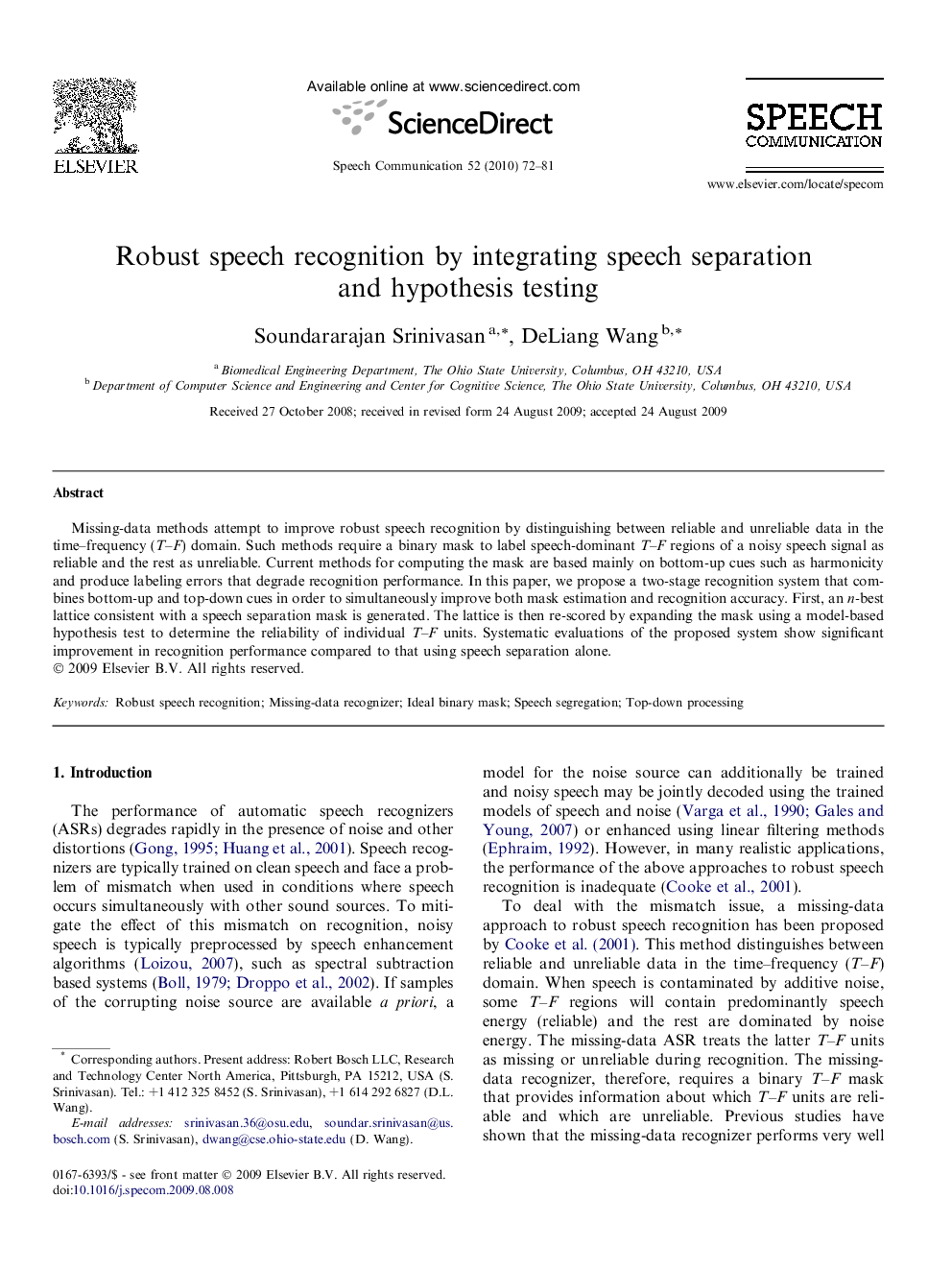| Article ID | Journal | Published Year | Pages | File Type |
|---|---|---|---|---|
| 565990 | Speech Communication | 2010 | 10 Pages |
Missing-data methods attempt to improve robust speech recognition by distinguishing between reliable and unreliable data in the time–frequency (T–F) domain. Such methods require a binary mask to label speech-dominant T–F regions of a noisy speech signal as reliable and the rest as unreliable. Current methods for computing the mask are based mainly on bottom-up cues such as harmonicity and produce labeling errors that degrade recognition performance. In this paper, we propose a two-stage recognition system that combines bottom-up and top-down cues in order to simultaneously improve both mask estimation and recognition accuracy. First, an n-best lattice consistent with a speech separation mask is generated. The lattice is then re-scored by expanding the mask using a model-based hypothesis test to determine the reliability of individual T–F units. Systematic evaluations of the proposed system show significant improvement in recognition performance compared to that using speech separation alone.
